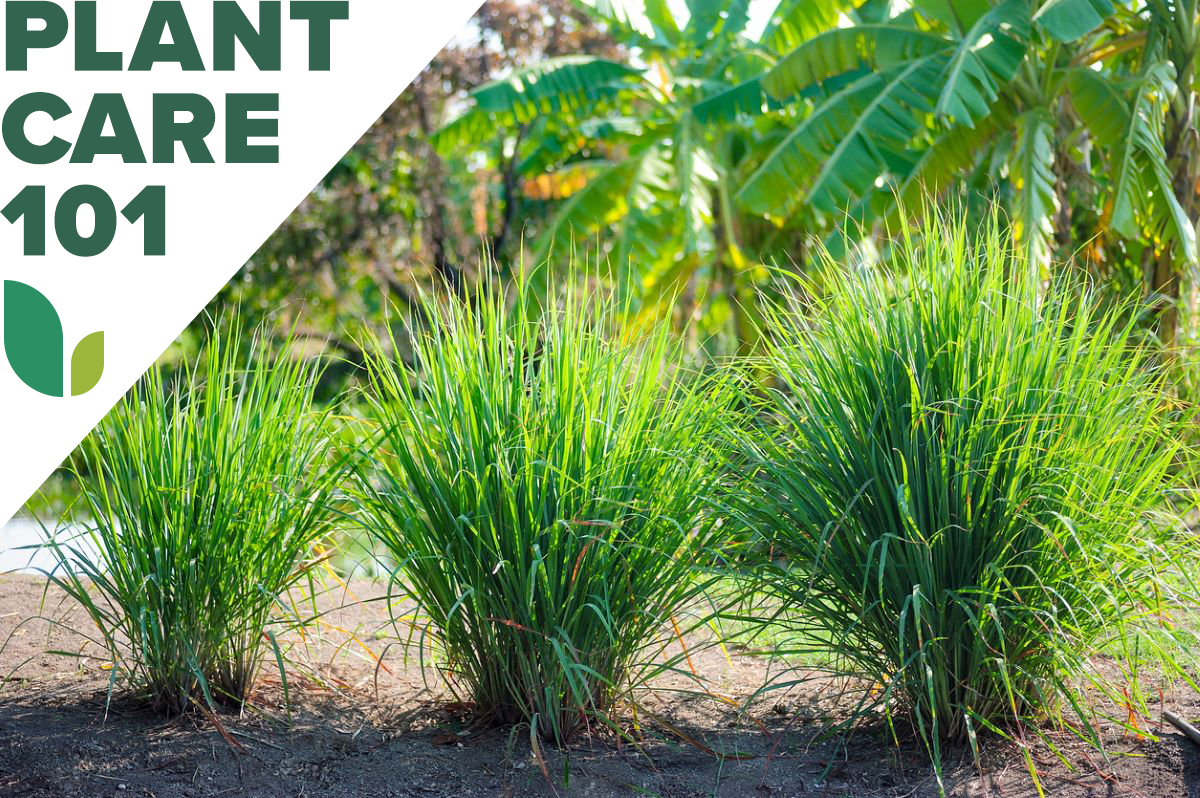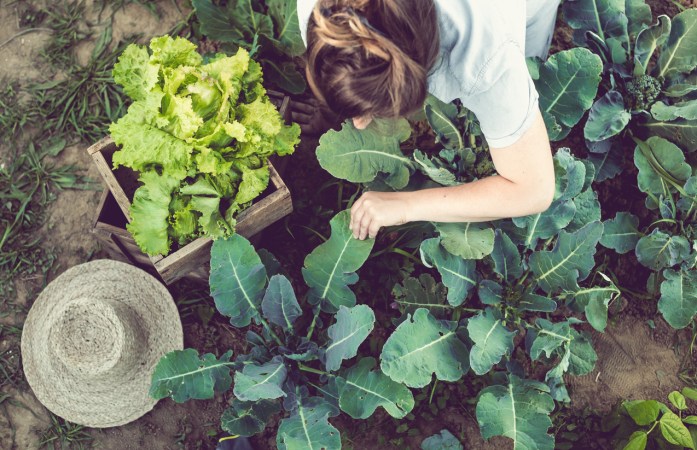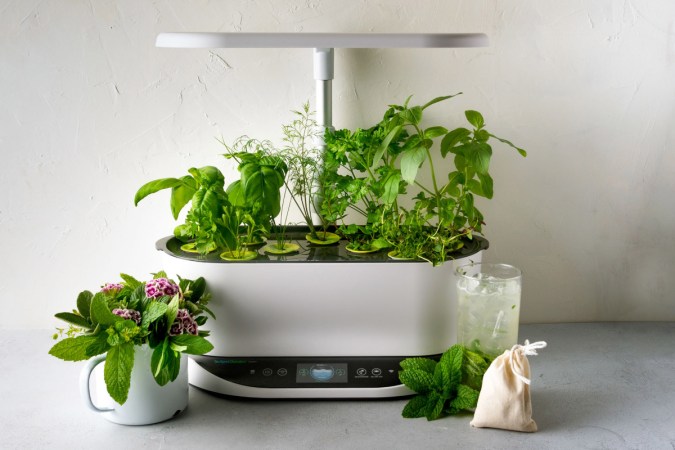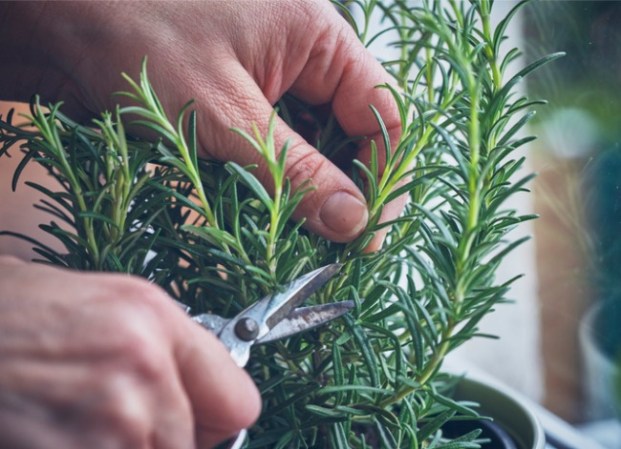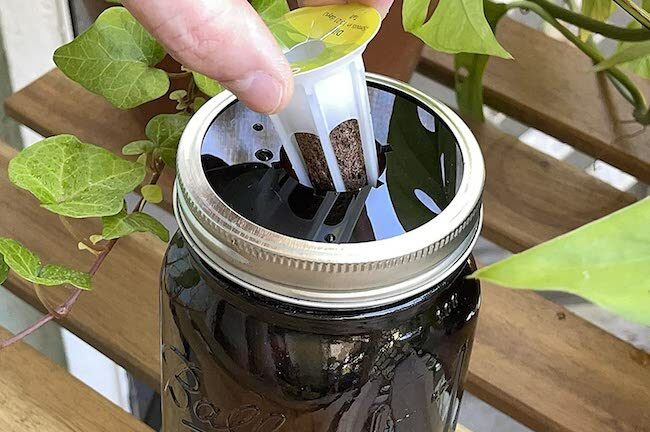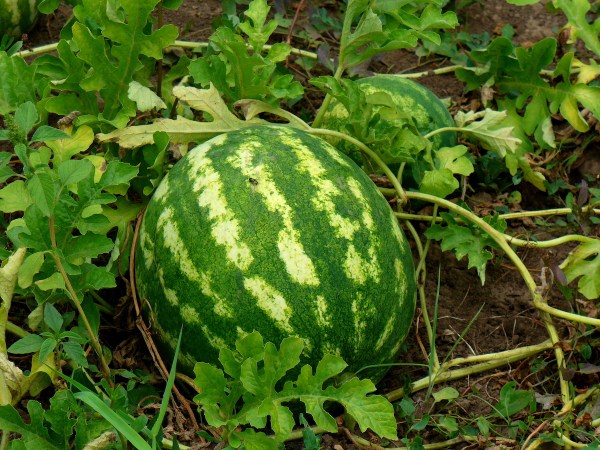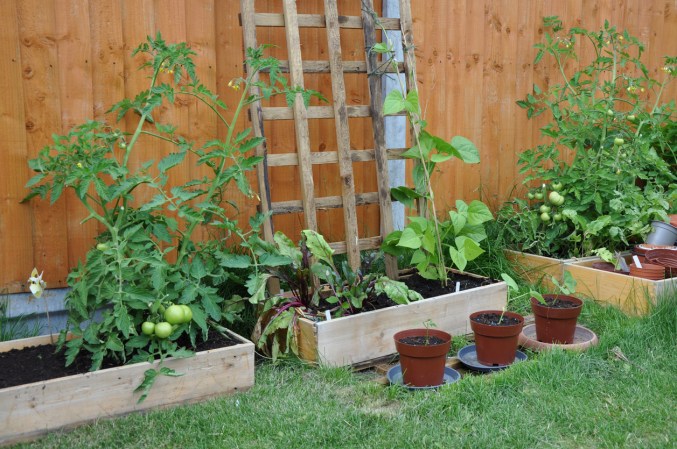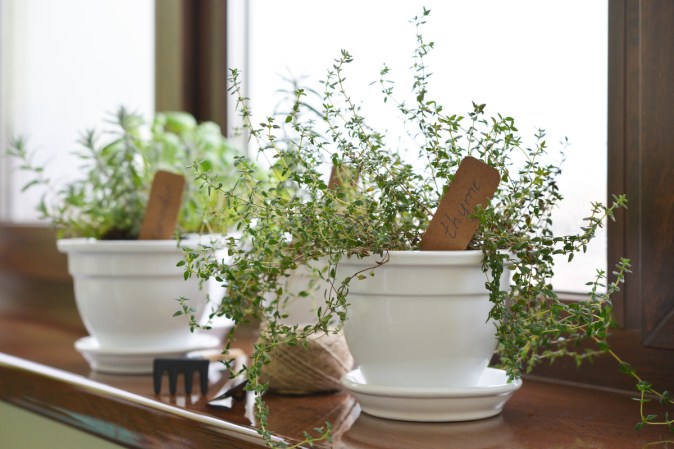We may earn revenue from the products available on this page and participate in affiliate programs. Learn More ›
If Thai dishes are your to-die-for food, read on for tips on how to grow lemongrass, an essential ingredient in Asian recipes. Keep in mind, though, that it isn’t likely to survive winters outdoors north of USDA Zone 8b, but it generally can provide you with usable stalks before autumn frosts.
However, you may want to bring the grass inside during the coldest months where it will freshen the indoor air with its citrus scent and enhance your cooking with its citrus flavor. Here’s everything you need to know about how to grow lemongrass at home.
RELATED: Add Flavor to Your Kitchen with a Winter Herb Garden
Growing Lemongrass at a Glance
Common Name: Lemongrass
Scientific Name: Cymbopogon spp.
Hardiness Zone: USDA Zones 8b to 12
Soil: Light, moist, and fertile
Light: Full sun
Water: Plentiful
Food: Balanced plant food
Propagation: Division, cuttings, or seed
Safety: Toxic to dogs, cats, and horses
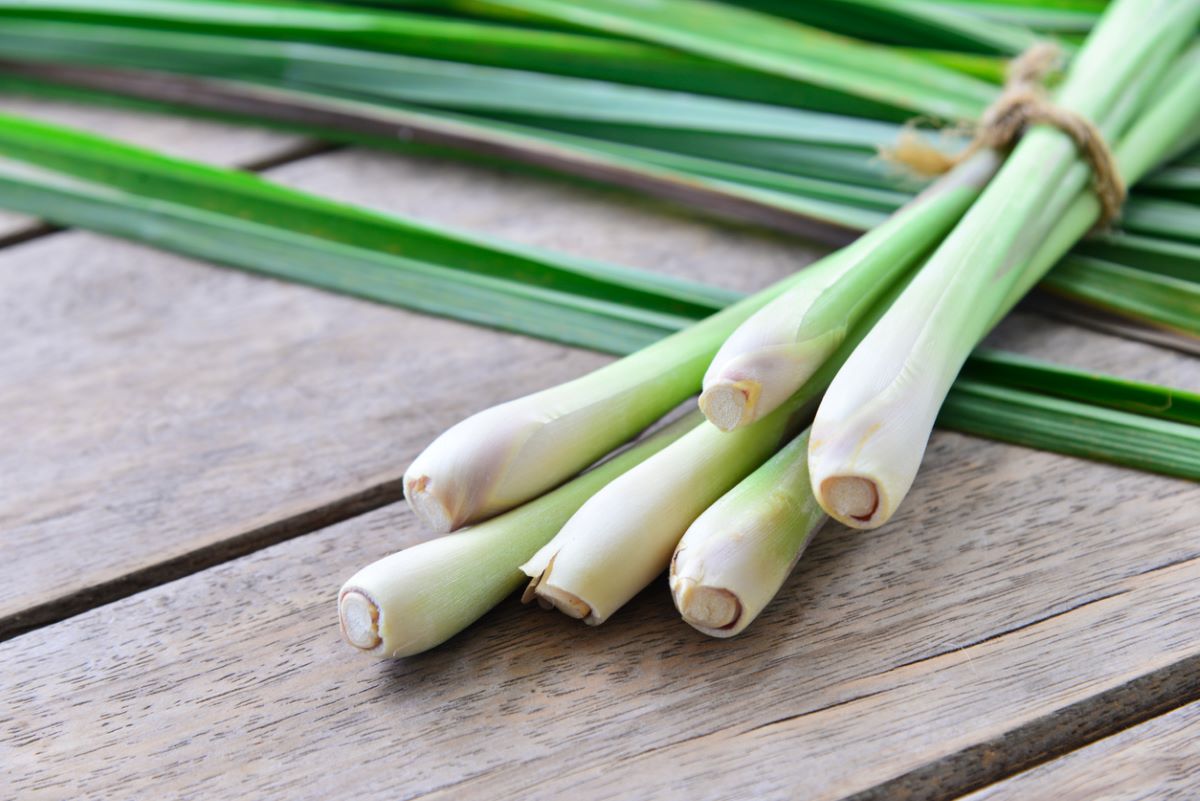
Lemongrass Characteristics
The lemongrass plant grows from rhizomes and reaches 3 feet when raised as an annual and up to 6 feet under favorable conditions. Its arching and serrated blue-green leaves vary in width from ½ inch to 1 inch. Although the rhizomes may survive winters as far north as USDA Zone 8b, the grass generally will only remain evergreen in zones higher than 9.
“Evergreen” may be the wrong description, though, since the foliage of West Indian lemongrass reddens in autumn and winter, while the East Indian type has red stems and leaf sheaths year- round. West Indian lemongrass seldom flowers. The blooms of the East Indian type are described by the Leon Levy Native Plant Preserve as “highly modified without identifiable structures such as the calyx or corolla.” Grown for their foliage rather than those flowers, lemongrasses are both insect- and snake-repellent plants.
Recommended Lemongrass Varieties
- Cymbopogon citratus: The most commonly grown culinary variety, this West Indian type is—according to Logee’s Greenhouses—“larger and more flavorful” than the East Indian species.
- Cymbopogon flexuosus var. flexuosus: This East Indian variety is seedier in nature than the West Indian type, has red stems and leaf sheaths, and reportedly makes the best lemongrass oil, but it can become invasive in zones where it is hardy.
- Cymbopogon flexuosus var. albescens: The “white” East Indian variety lacks the ruddy coloring of the red type and is considered inferior for oil production.
Planting Lemongrass
Planting lemongrass in the garden is optional, since you can leave it in a large pot all year round, if you prefer.
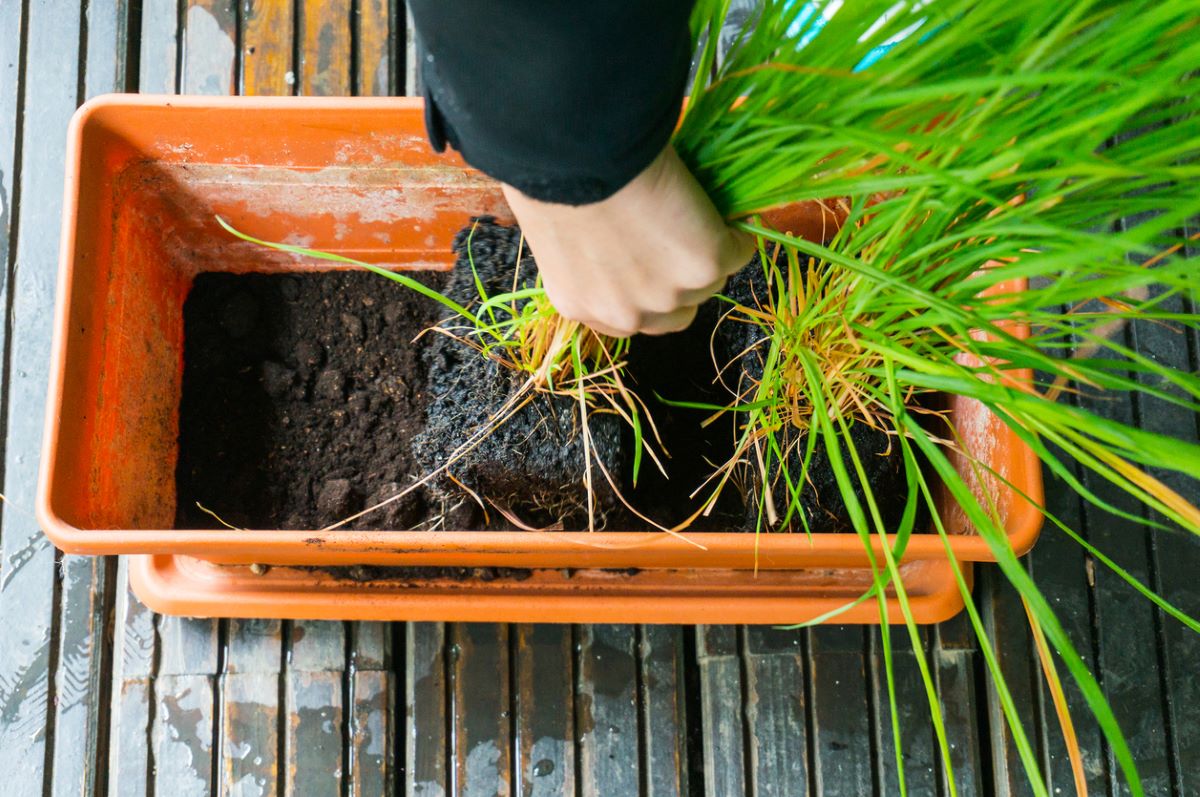
When is the best time to plant lemongrass?
Plant lemongrass in late spring after your last frost date when nighttime temperatures are consistently above 40 degrees Fahrenheit. If you are moving an indoor plant outdoors, gradually acclimate it to outdoor conditions by placing it in shade first and exposing it to a little more sun each day.
Where can lemongrass grow?
Choose a position in full sun with light, well-draining, fertile soil. The West Indian grass isn’t picky and can thrive in almost any garden bed with a pH between 5 and 8.4. East Indian lemongrass, on the other hand, prefers acidic soil with a pH between 5 and 5.8.
How do you plant lemongrass?
If you suspect that your soil isn’t fertile enough or is too heavy, dig at least a couple of inches of compost into it before you set out your plant.
- Water the lemongrass well, remove it from its pot, and plant it in the ground at the same depth at which it grew in the pot.
- If you have more than one plant, place them 3 feet apart.
- Keep the plant watered well until it becomes established.
Can you grow lemongrass in containers?
Containers work well for growing lemongrass. A large plant generally will require a pot at least 1 foot in diameter. Alternatively, you can use a 5-gallon bucket that has drainage holes drilled in the bottom. Fill it with an organic potting mix containing compost.
If you are starting out with a small plant, choose a pot more appropriate for its size and only shift the grass to a larger container after it has filled up the smaller one. Lemongrass in pots outdoors probably will require more frequent watering than if it were in the ground. Bring it into the house before autumn temperatures fall below 40 degrees Fahrenheit. It can join your other indoor herbs on a south-facing windowsill where it receives at least 6 hours of sunlight daily and temperatures above 60 degrees.
RELATED: The 12-Inch Farm: 12 Foods You Can Easily Grow in Containers
Watering Lemongrass
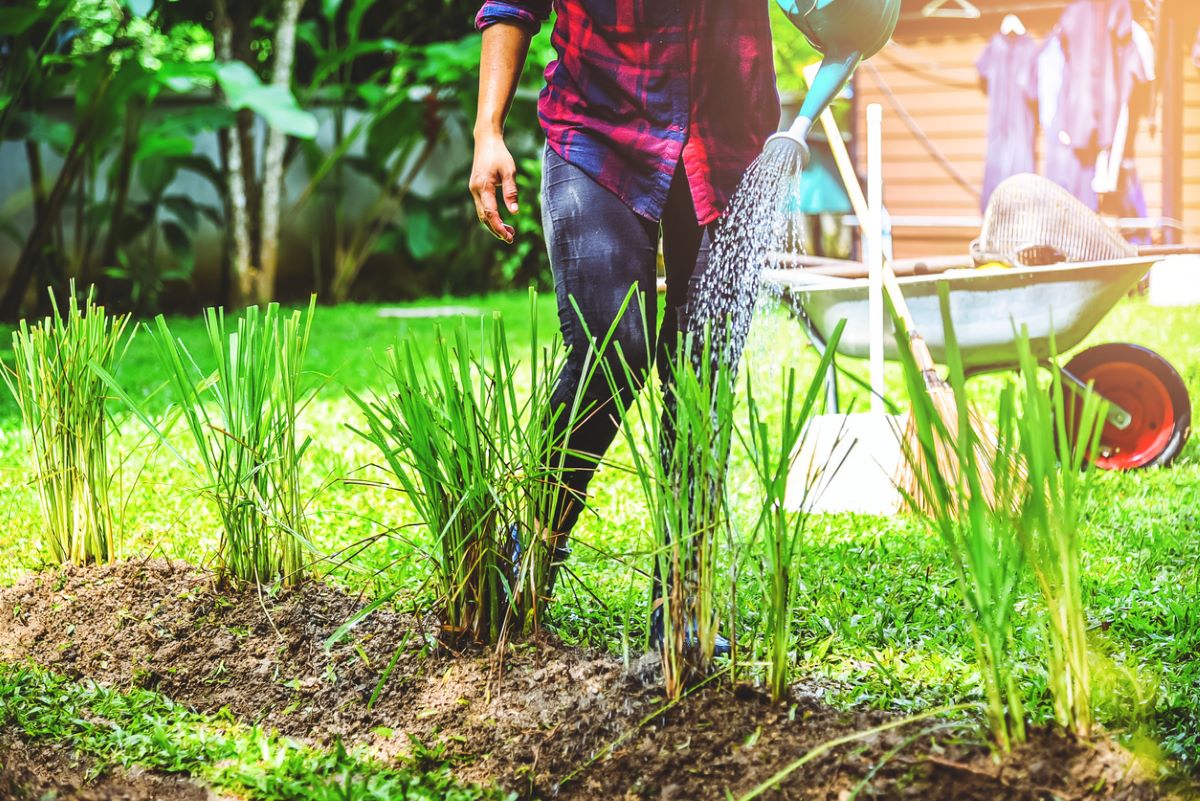
Native to hot, humid climates, lemongrass likes to be kept moist at all times, but only lightly moist—as if its soil were a wrung-out sponge. Therefore, plants growing in pots may require daily watering, while irrigation for those in the ground will depend on the frequency of rainfall. Lemongrass also will appreciate frequent misting when the humidity is low.
However, if you move the plant indoors for the winter, you will need to cut back on the amount of water you give it. Daily watering under lower light conditions can cause rotting of the grass’s rhizomes.
Fertilizing Lemongrass
To keep your potted lemongrass growing rapidly, feed it once per week with a balanced liquid plant food, such as 10-10-10, at half strength or once every 2 weeks at full strength. Refrain from fertilizing it when it is indoors during winter.
To meet this plant’s need for nitrogen, feed an in-ground lemongrass plant once per month during the summer with a granular balanced fertilizer such as 10-10-10 or the organic 5-5-5, following the directions on the label.
Pruning Lemongrass
Gardeners growing lemongrass outdoors in a climate in which it goes dormant during winter should cut it down to about 6 inches after it enters the dormant period to encourage it to come back strong once the weather warms again. Those who keep a plant growing on a sunny windowsill indoors during winter will want to prune it down to 1 foot before taking it outdoors in spring. Wear gloves while trimming this grass or its serrated leaves might cut back!
RELATED: How to Grow Cilantro Indoors for Fresh Herbs Year Round
Propagating Lemongrass
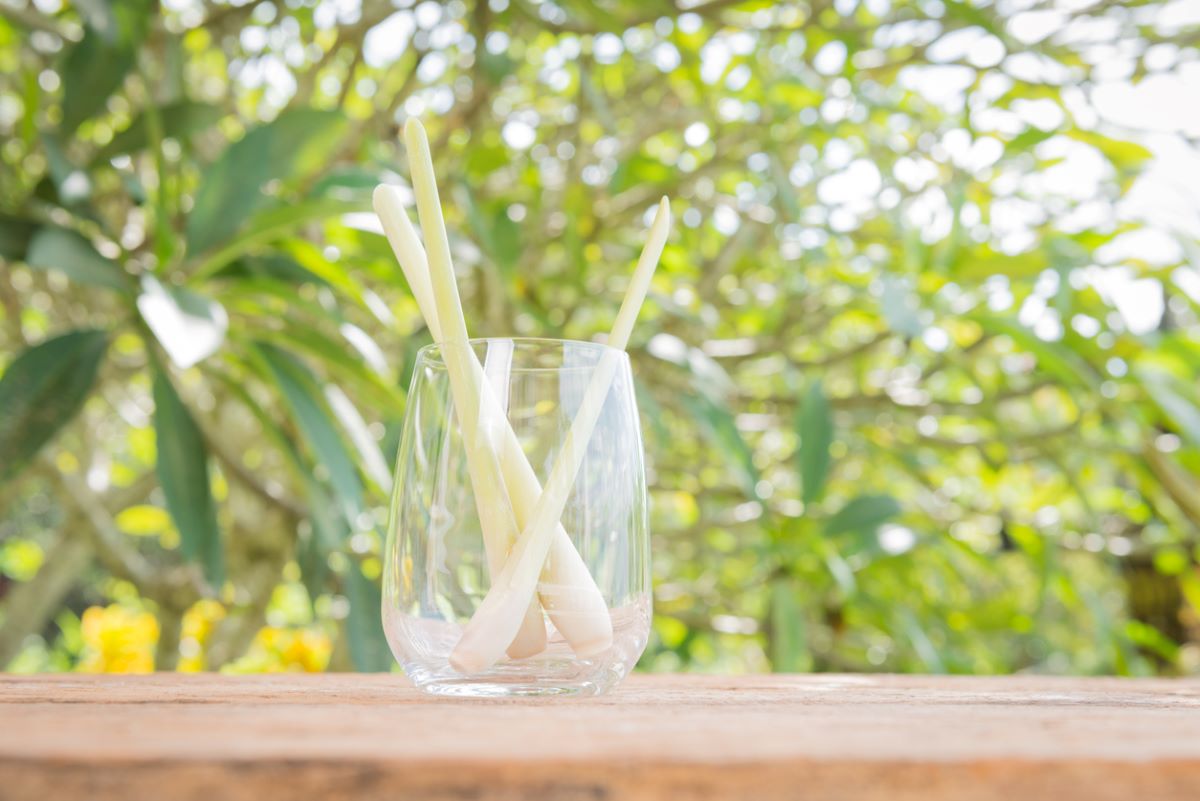
For inexpensive lemongrass plants, purchase fresh stalks of the herb from your supermarket and place them in a transparent glass or jar on your windowsill with a couple of inches of water covering their bases. They should root within about 2 weeks. Alternatively, you can divide a plant you already have to make several plants simply by digging it up and separating some of the rhizomes from each other, making sure that each division has roots of its own.
To sow lemongrass seeds, scatter them over the surface of a damp and sterile seed starting mix and press them into that mix without covering them. If you keep them at 68 to 70 degrees Fahrenheit in a bright location, they should sprout within 5 to 21 days.
RELATED: DIY Lite: Make an Herb Garden from Kitchen Recyclables
Safety Considerations
The serrations on lemongrass leaves are sharp enough to cut skin when those leaves are handled carelessly, so it is a good idea to wear gloves when harvesting your lemongrass. Also, although lemongrass is edible for humans, it may induce digestive upset in dogs and cats and breathing problems in horses. In fact, it can cause equine deaths, though those aren’t common. Still, you’ll want to keep this grass far away from your pastures.
Potential Pests and Diseases
In humid climates, lemongrass may suffer from rust, especially if grown in close proximity to others of its kind. Small yellow dots on the foliage eventually will darken into brown spots and lesions. You may be able to alleviate the symptoms by thinning out your clump of grass a bit and spraying it with a fungicide.
On the other hand, in plants kept too dry, spider mites also can cause yellow—or white—speckling on lemongrass leaves. Shoot them off with a strong stream of water. Afterward, be careful to water and mist consistently as part of your lemongrass plant care to prevent their reappearance.
Harvesting Lemongrass
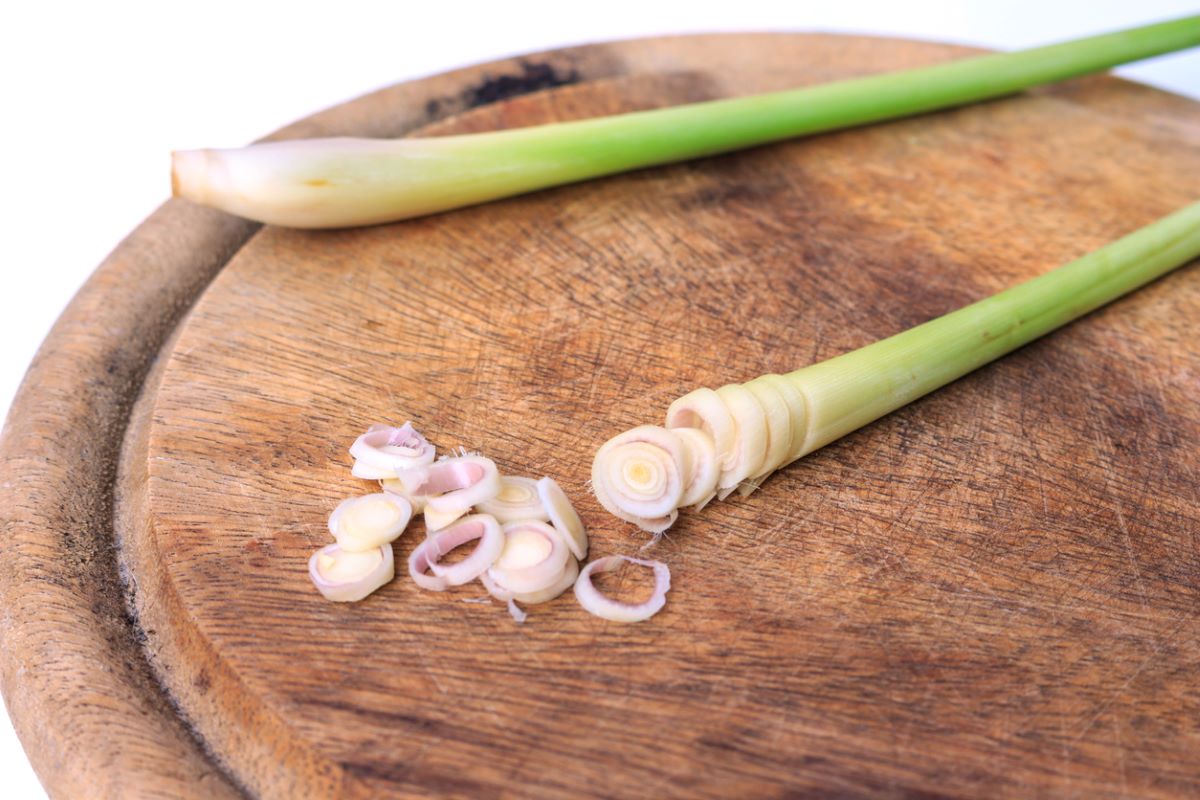
Once your lemongrass is at least a foot tall, you can cut a little off any time you need it for cooking. When harvesting this herb, snip the outermost stalks.
When is the best time to harvest lemongrass?
If you don’t intend to preserve your plant by taking it indoors during winter, you’ll want to harvest all of it—following the steps below—just before your first frost in autumn. Besides preserving the “scallions” by freezing, you might want to dry the leaves for use in teas and Asian recipes.
How do you harvest lemongrass?
Instructions on how to grow lemongrass won’t help you much if you don’t know how to gather it, too:
- Harvest a lemongrass stalk when it is a half inch in diameter by snipping it off just above the bulb.
- Remove any leaves and woody sheaths and discard the upper two-thirds of the stalk, retaining the bottom third, which should resemble a yellowish, fibrous scallion.
- To preserve the leaves, chop them into smaller pieces and spread them out to dry in a warm, protected place.
How do you store lemongrass?
To preserve the lemongrass “scallions,” place them inside a freezer bag immediately after you harvest them. Then put the bag in the refrigerator for up to 1 month or in the freezer for up to 6 months.
Store dried lemongrass leaves as you would other herbs, in a capped container inside a cool and dark cupboard.
Looking for more herb articles? Check out our guides on growing kitchen herbs, indoor herbs, and outdoor herbs.

